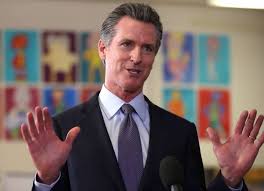Cultural Appropriation: Is It Really a Bad Thing?

Richard Hunt, an indigenous sculptor in Canada, is calling on federal authorities there to take action against foreign companies that are copying his carvings and selling them as authentic, native American Indian craft work.
Mr. Hunt has a good complaint. What these businesses are doing is wrong. It’s forgery, misleading advertising, and theft of his intellectual property. Hopefully, he will prevail.
Hunt referred to it as “cultural appropriation.”
Is it?
Cultural appropriation is a term that was first used in a 1945 essay on “Orientalism” by Arthur E. Christy. (Imagine using that title today!)
The term did not catch on until the mid-1980s, when it popped up as a minor tenet of the burgeoning critique of Western colonialism. In the 1990s and 2000s, it took root with leftist intellectuals. And in the last 10 years, it’s blossomed among the Woke communities, along with its more complicated post-modern siblings: identity theory and critical race theory.
Cultural appropriation is generally defined as the use of elements of one culture by members of another. That could make it synonymous with assimilation. But it’s distinguished from assimilation in that it applies to majority cultures appropriating elements of minority cultures, and not vice versa.
Cultural appropriation is considered a bad thing by most who talk about it. Their argument is that minority cultures have some sort of ownership rights over their historical and cultural traditions. These would include their music, art, dance, dress, fables, symbols, and even social behavior. And the term is applied to virtually any use of these cultural elements by people of the majority culture, regardless of whether the intent is defamatory or appreciative.
J.K. Rowling, for example, was accused of appropriating Native American spiritual beliefs, symbolism, and traditions by turning them into stereotypes and fantasy games in her web series History of Magic in North America. And Paul Simon was criticized for incorporating the sounds and themes of Mbaqanga, a genre of South African street music, into the music he composed for his Grammy-winning album Graceland.
The best-known crusade against cultural appropriation in the US is the long-standing effort to eradicate the use of Native American tribal names for sports teams. When this objection was first lodged, about 20 years ago, virtually nobody, including Native Americans, thought it made the least bit of sense. Everyone seemed to understand the difference between adopting cultural names or symbols that are meant to be positive and using names or symbols to denigrate.
Despite the absurdity of the objections to giving sports teams Native American names, the lobby was eventually successful. Today, only a handful of such names exist around the country. And only the Florida Seminoles have officially given permission to use theirs.
The US economy, or its sports industry or its culture generally, will not suffer from the extinction of Native American names. Nor will other industries and/or institutions suffer greatly from the elimination of images of Confederate generals or Abraham Lincoln, for that matter.
The primary initiative of the CJWs (Culture Justice Warriors) – to somehow restrict or regulate cultural appropriation generally – will never work because the human tendency towards it is too deeply a part of our cultural instincts and intelligence.
Cultural appropriation is as old as culture itself. Every culture that dominated another sooner or later appropriated elements of the minority culture. It happened when the ancient Greeks were conquering their neighbors. It happened when the Romans conquered the Greeks. It happened at the end of the Roman Empire, when the church relocated its headquarters to Constantinople. It happened during the 15th and 16th centuries, in the age of exploration and colonialization. And it has happened ever since, in many ways and forms.
In fact, it’s impossible to imagine what American culture, which has been appropriated all over the world since the beginning of the 20th century, would be without the appropriation of its minority cultures.
Cultural appropriation is natural. It is inevitable. It is part of human nature. It is unstoppable. Most importantly, it is good for the advancement of civilization.










